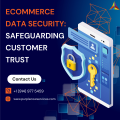One way to overcome this challenge is through personalized upgrades that add value to the customer experience. Here are five strategies to personalize your upsells and cross-sells:
Focus on Timing and Limitations
Timing is everything when it comes to upselling and cross-selling. The key is to use data to identify what problems your current customers want to solve and offer additional services that can help them achieve greater success. By understanding your customers’ pain points, you can offer relevant and timely solutions that add value to their experience.
One way to create extra upsell opportunities is to limit your product’s usage. For example, if you offer a software subscription, you could limit the number of projects or users a customer can have on a lower-tier plan. This creates a natural incentive for customers to upgrade to a higher-tier plan to gain access to more features or resources.
Another way to leverage timing and limitations is to offer limited-time promotions. For example, you could offer a discount on an additional product if a customer makes a purchase within a specific time frame. This creates a sense of urgency and incentivizes customers to make a purchase.
Add User-Generated Content
User-generated content is a powerful tool for building trust and credibility with your customers. Genuine customer reviews help build trust, so let customer social media content encourage cross-sells. Social media platforms like Instagram and Twitter are excellent sources of user-generated content that you can use to promote your products and services.
One way to leverage user-generated content is to create a social media campaign that encourages customers to share photos or videos of them using your products. You can then repost this content on your social media channels, showcasing the versatility and quality of your products. You can also use this content to create targeted ads that showcase your products in action.
Another way to leverage user-generated content is to filter reviews that will resonate with the customer’s interests. For example, if you sell outdoor gear, you could filter reviews that mention hiking or camping. This increases the likelihood of a cross-sell purchase by showing customers how your products can be used in conjunction with their hobbies and interests.
Offer Personal Product Recommendations
Personalization is key to successful upselling and cross-selling. Customers are more likely to buy a product if it feels tailored to their needs and interests. One way to personalize your recommendations is to examine historical and affinity data to offer product recommendations based on trends.
For example, if a customer has purchased running shoes in the past, you could recommend running socks or a running hat as a cross-sell. You could also leverage affinity data to recommend products that other customers with similar purchase histories have bought.
Another way to personalize your recommendations is to speak directly to the customer using words like you, your, and yours. This creates a sense of ownership and makes customers feel like the product was specifically recommended for them.
Consider Pricing Options
Pricing is an important factor in upselling and cross-selling. Customers are more likely to make a purchase if they feel like they are getting a good deal. One way to leverage pricing is to learn your customer’s price sensitivity and bundle products to create a bargain that fits their current budget.
For example, you could bundle a lower-priced product with a higher-priced product to create a discount. This incentivizes customers to purchase both products, increasing your average order value.
Another way to leverage pricing is to offer payment plans or subscriptions. By breaking up the cost of a higher-priced product into smaller, more manageable payments, you make it easier for customers to justify the purchase. This can be especially effective for higher-priced items like electronics or furniture.
It’s also important to keep in mind that different customers may have different price sensitivities. One customer may be willing to pay a premium for a high-end product, while another may be more price-conscious. By understanding your customer’s price sensitivity, you can offer products at a price point that they are comfortable with.
Remember Customer Support Interactions
Finally, it’s important to remember that customer support interactions can also be an opportunity for upselling and cross-selling. Train your support team to spot upsell opportunities and give honest product suggestions.
For example, if a customer contacts your support team with a question about a product, your support team can use that opportunity to recommend a complementary product. This not only adds value to the customer’s experience but also increases the likelihood of a cross-sell purchase.
It’s also important for your support team to be knowledgeable about your products and services. By understanding the features and benefits of your products, your support team can make informed recommendations that add value to the customer’s experience.
Conclusion
Upselling and cross-selling are essential components of any successful eCommerce strategy. By personalizing your upsells and cross-sells, you can add value to the customer experience and increase your revenue. Remember to focus on timing and limitations, leverage user-generated content, offer personal product recommendations, consider pricing options, and remember customer support interactions.
By implementing these strategies, you can create a more personalized and effective upselling and cross-selling strategy that benefits both your business and your customers. By offering relevant and timely solutions that add value to the customer experience, you can build trust and loyalty with your customers and increase your recurring revenue.
Looking to boost your eCommerce revenue? Stand out from the herd with personalized cross sell and upsell services from Purple Cow that add value to your customer’s experience. Don’t blend in with the competition, be a Purple Cow and watch your eCommerce revenue soar.














